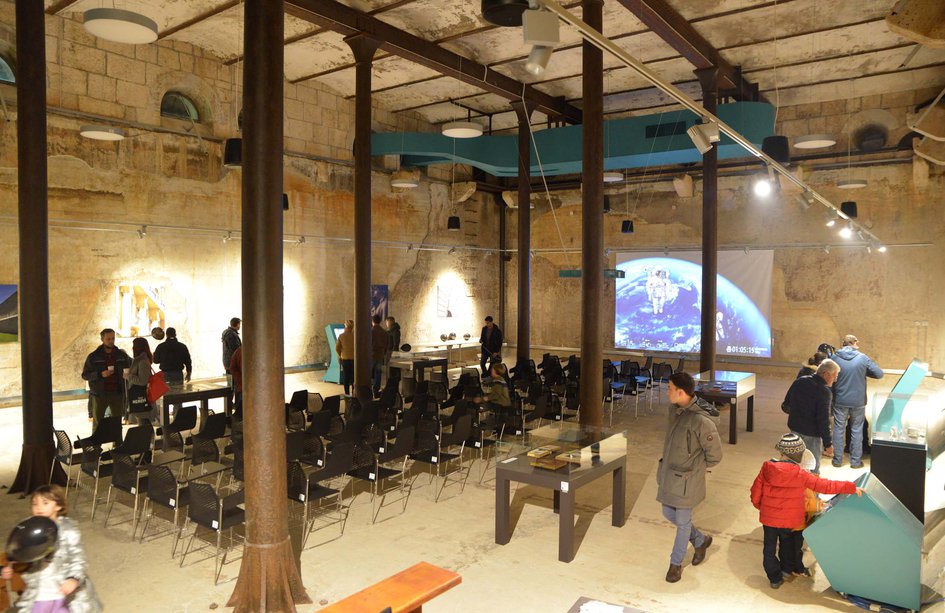Herman Potočnik Noordung Visitor Centre (water reservoir)
The story of the water reservoir represents an interesting and important episode in the history of public utility services in the city of Pula. Its construction dates back to the third quarter of the 19th century, a time of intense building activity in the city that demanded the construction of adequate utility services and, above all, the tackling of the issue of public water supply and sewerage.
The new water supply service was put into operation in 1861, drawing water from a spring located at Karolina used since antiquity. The selected location for the construction of the new water reservoir was on top of the Kaštel hill, outside the fortification, to where water was pumped from the spring and then distributed to the consumers.
Due to the growing need for water in the 1870s, a new, additional water reservoir was built along the north curtain wall inside the fortification’s yard, connected to the old reservoir by a stone arch that extended over the northern trench. An iron pipe was installed on the arch to supply additional quantities of water from the water spring at Karolina by means of a suction pump, located on the roof of the new reservoir (the arch was unfortunately demolished in 1964 because it posed a potential hazard for the visitors). Following the construction of the new reservoir which occupied almost half of the fortress yard, the inner space of the fort was also reconstructed. The reservoir served its original function until the 1960s. In 2015 the reservoir was transformed into a multimedia hall - the Herman Potočnik Noordung Visitor Centre.
The historic Austro Hungarian water reservoir was transformed into the Herman Potočnik Noordung Visitor Centre within the HERA project. The objective of the HERA project, funded through the IPA Adriatic CBC Programme 2007-2013 in the total amount of 8,842,602.24 EUR, was to implement new models for management of sustainable tourism based on common Adriatic cultural heritage through the integrated cross-border cooperation of the 18 partners involved. The Region of Istria, as one of the project partners, converted the reservoir into the Herman Potočnik Noordung Visitor Centre and equipped it with state-of-the-art multidisciplinary information technology, multilingual interactive presentations, virtual walks and guides that introduce visitors to the cultural route through the Austro-Hungarian Pula. The cultural route through the Austro-Hungarian Pula represents the historical, architectural and cultural route through the Austro-Hungarian Monarchy, a multi-national empire and one of the world's greatest powers from the late 19th and beginning of the 20th century, that declared Pula as the Monarchy's main port.
The Visitor Centre was named after the rocket engineer Herman Potočnik Noordung, an Austro-Hungarian pioneer of astronautics born in Pula in 1892. By the end of 1928, he published the book "The Problem of Space Travel - The Rocket Motor", in which he set out a plan for a breakthrough into space and the establishment of permanent human presence in space. Potočnik conceived a detailed design for a space station, considered by Russian and American historians of spaceflight to be the first architecture in space, describing various phenomena and ideas that made him one of the founders of astronautics.









